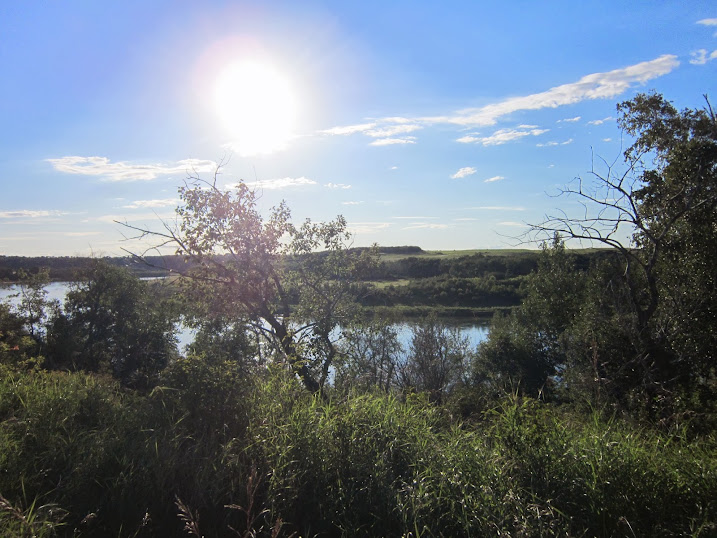Saskatchewan Archaeological Society
The Saskatchewan Archaeological Society (SAS), founded in 1963, is one of the most active and effective volunteer-based archaeological organizations on the continent. We educate the public, promote research and advocate for heritage preservation and protection. Our members include professional archaeologists, avocational archaeologists and members of the general public that are curious about our province's first peoples and other cultures.
What does the SAS do?
- Offers all ages fieldschools, hands-on workshops, annual meeting and conference, annual bus tour, special tours and regional chapters across the province.
- Offers teaching and educational resources such as artefact replicas, "archaeo-kits", "Kiwetinohk"
- travelling rock art exhibit, videos, an extensive library of books, journals, theses, maps and photos, a quaterly newsletter on archaeology, history, natural history, geology and palaeontology news and publications for sale.
- Provides funding to individuals or groups for research projects and the annual Zenon Pohorecky Memorial Bursary to university students.
How do I join?
Contact the SAS!
#1-1730 Quebec Avenue
Saskatoon, SK S7K 1V9
Ph: (306) 664-4124
Fax: (306) 665-1928
Email: saskarchsoc@sasktel.net
Web: www.saskarchsoc.ca
During 2013, the SAS is celebrating its 50th Anniversary of the Annual Gathering and are placing a number of geocaches at archaeological and historically significant sites throughout the province.
SAS #17: Across from Petite Ville
Due to access issues, Petite Ville is no longer available to members of the general public. As such, we hope you’ll enjoy the view of the site from across the river!
Petite Ville is a Métis hivernant (wintering) site along the western bank of the South Saskatchewan River approximately 15 kilometres south of Batoche. It was inhabited in the 1870s when the Métis were in the area following bison herds. It is believed to have been home to approximately 40 families and as many as 400 people over a period of four years. The hivernant Métis lived a semi-nomadic lifestyle in Saskatchewan by building semi-permanent wintering camps consisting of log cabins while following and hunting the dwindling bison population on the prairies. There is some debate as to when the site was first occupied. It was either founded by Gabriel Dumont in 1868 (Woodcock 1976; Anick 1976) although this could also refer to a settlement near Duck Lake, or it was first settled in 1870 by forty families from Red River believed to have built a wintering village near a bend in the South Saskatchewan River (Weinbender 2003). However, it is likely that the settlement is older than 1868 or 1870 as Métis were present in the area as early as 1860. Gabriel Dumont was in the area as well during the 1860s having been elected chief of the Métis wintering in the Saskatchewan District in 1863 (Weinbender 2003). The semi-nomadic life of bison hunting was becoming an issue for local Métis as the herds continued to decline. A community meeting was held in December 1871 to determine what to do. From this resulted the unanimous decision to establish a permanent, agricultural Métis colony and abandon the site at Petite Ville.
A crew working on the Parks Canada survey at Batoche first recorded the archaeological site in 1979. This later led to a formal survey in 1979, which recorded 28 depressions. In 1986 Petite Ville was again surveyed extensively by archaeologist David Burley who recorded 177 features and determined that the site covered approximately 80 hectares of land. Then landowner, Harold Tadei, became interested in the research and was determined to interpret and record the site. In 1991, the Petite Ville Restoration Foundation was created.
In 1998, the Department of Archaeology at the University of Saskatchewan held the first of three archaeological field schools at the site. Due to the large extent of Petite Ville, field school excavations focused on one area, “Cluster A”. “Cluster A” was a unique structure with three rooms. Typically excavated Métis hivernant structures tend to have only 1 or 2 rooms. No historical descriptions of 3-roomed Métis hivernant structures exist and only one photo from Wood Mountain shows the presence of a 3-roomed structure (Weinbender 2003). The presence of 3 rooms in one structure at Petite Ville makes “Cluster A” the largest Métis hivernant structure ever found in Prairie archaeology.
 References:
References:
Anick, N.
1976 The Métis on the South Saskatchewan, Volume 1. Manuscript Report No. 364. Parks Canada: Ottawa.
Weinbender, Kimberley D.
2003 Petite Ville: A Spatial Assessment of a Métis Hivernant Site. Unpublished MA thesis, Department of Archaeology, University of Saskatchewan: Saskatoon.
Woodcock, George
1976 Gabriel Dumont: The Métis Chief and his Lost World. Hurtig Publishers: Edmonton.